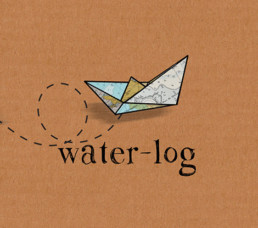Ahhh, the sailing life. The imagined carefree bliss of cruising through gin-clear waters, of sunsets in secluded Caribbean anchorages, of whitesand beaches in the South Pacific, dolphins dancing at your bow wave whilst the steady tradewinds carry you forwards with your sails billowing.
Okay, it may not all be quite that gorgeous all of the time but whatever your crazy and wild dream of full-time cruising looks like there is something that I do know to be true: there can be no tranquil sailing adventure, no calm crossing or peaceful passage without a veritable whirlwind of logistics wrangling, organisational tangles, and planning madness that comes before it.
I remember doing all the prep for a passage from the British Virgin Islands to Southern Cuba which had me a bit jittery because it was our first voyage as a couple for some time. We planned and planned, spent time provisioning, working out all possible routes, assessing weather forecasts and made copious notes on ports of refuge. I even made myself cheat sheet scripts in appalling Spanish to help me communicate with the harbourmaster over the VHF. We worked and worked getting all our ducks in a row and the actual passage itself was so quiet, smooth and easy that we felt rather foolish for having devoted so much time to the scheming of it all.
Likewise with trips that involved encountering notoriously bad conditions when you pick the wrong timing, such as the Bay of Biscay or the Tehuantepec in Pacific Mexico, we researched and head-scratched for ages prior to jumping off. What were our options? What would we do if the weather window closed? Was the boat equipped, all set and ready for strong winds? We’d plan and counter-plan and simply give a lot of time to thinking through it all, so much so that both these potentially epic journeys turned out to be a doddle.
Your first ocean crossing is similarly daunting and momentous. Timing for that is crucial in order to avoid the most extreme conditions and make best use of stable wind patterns. But there is nothing quite so intimidating as seeing the small specks on the chart that the Canary Islands appear to be and glancing to the equally small speck of St. Lucia that you’re aiming for, with that huge mass of Atlantic in between and realising that any day now you’ll be leaping off on that journey.
But there can be no equal to that frenzied turmoil, that flurry of to-do lists, the scramble to think of and tackle every aspect of planning that is the storm of setting out on the cruising life. Whether your first passage is a day trip or a big crossing, a voyage downriver or simply leaving the safety of the marina where you bought her, the lead-up to the liveaboard lifestyle on a boat is manic to the extreme.
And, in this instance, it’s simply that you’re layering an entirely new set of concerns and considerations onto your existing way of life and it’s exhausting having a foot in each of these two worlds. I remember talking on the phone with my bank about putting notes on my account that I would be sailing round the world at the same time as emailing our estate agent with notes for potential rental tenants for our London house. I would stay up late educating myself by reading books on anchoring technique and recommendations for ground tackle; we packed and re-packed and continually assessed our belongings – eventually donating lots to charity; we had to wind up our city-life affairs, utility bills and correspondences all while investigating vaccinations, boat insurance, brushing up on French, sourcing countless bits of boat kit and getting our liferaft serviced. No sooner had we learned the name of a bit of gear onboard than we would discover it had broken or needed repair and I remember feeling as though we were haemorrhaging money.
It was mad, and chaotic and definitely overwhelming.
And then, all of a sudden it was upon us. The noise abated, the clouds parted and the right weather was there to enable us to cast off the dock lines, call in the passage plan and head out to sea. A voyage has a purpose and a destination. You have the focus of what needs to be done now and nothing else is important. Instead of worrying and wondering what will or could be you can simply be. By far the hardest thing about sailing for all these years was leaving in the first place.
